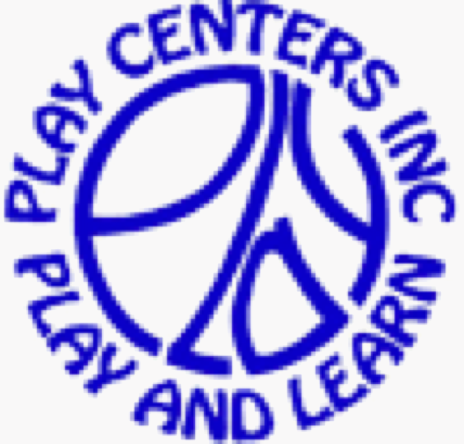Infants, Toddlers & Two’s
Curriculum
Play Centers/Play and Learn believes that a comprehensive curriculum for infants through two year olds must have as its foundation an understanding that children learn through play and that there is a clear relationship between play and future academic success.
Children’s learning opportunities need to be developmentally appropriate, multi-sensory, enriching the needs and interests of each child. After careful evaluation, Play Centers/Play and Learn selected The Creative Curriculum, a Maryland State Department of Education approved curriculum, which aligns with our educational philosophy.
The Creative Curriculum allows our teachers to engage the children in playing with toys, imitating and pretending, enjoying language and literacy, connecting with music and movement, creating art, exploring technology, discovering science, and experiencing outdoor activities. These components are all necessary to a successful and well-rounded learning environment. Additional educational materials may also be used in conjunction with The Creative Curriculum.
While we use many resources to develop a high quality, comprehensive environment, our curriculum is built on a foundation and understanding that children’s play is their “work”. Play is essential and critical to each child’s healthy and successful development.
Snacks & Meals
It is the responsibility of the parent to provide all snacks, meals, and drinks for their infant/toddler/two’s. Nutritional snacks are provided by the center, two times each day, to children two years of age and older. Lunches must be provided by the parent for children of all ages.
Tuition
Tuition rates vary based upon the center location, child’s age, and the type of care your family is in need of. If you would like enrollment and tuition information for one of our programs, we invite you to call the Play Centers, Inc. Administrative office at 410-296-4880, ext. 100.
Our Office Manager will assist you with selecting the Play Centers School Age or Preschool Program that best fits your family’s needs and will provide you with information regarding tuition and enrollment.
Child Development
We offer curriculum and activities that develop the “whole child”. The following is a list that identifies Infant/Toddler Developmental Milestones.
Physical (Motor) Skills
- 0-3 Months: Accomplishes controlling neck and head, follows objects with eyes, turns head in response to sound.
- 3-6 Months: Discovers hands and feet and how they move.
- 6-9 Months: Sitting up and grasping with fingers and thumbs.
- 9-12 Months: Crawling, pulls up to standing position and walks around furniture.
- 12-18 Months: Walking, putting toys in a can, pincer grasp.
- 18-24 Months: Climbing stairs, scribbling, walking well, running and jumping.
Language (Communication) Skills
- 0-3 Months: Cooing, gurgling, and crying
- 3-6 Months: Uses different cries for different needs, laughs out loud.
- 6-9 Months: Babbles to self a lot tries to repeat sounds like ”mama, dada, baba.”
- 9-12 Months: Understands “no,” says a few real words.
- 12-18 Months: Often speaks loudly because they like the sound of their own voice.
- 18-24 Months: Says at least 50 words, combines two words, enjoys looking at simple books.
Cognitive (Thinking) Skills
- 0-3 Months: Recognize faces and voices, adjusts to schedules, tracks objects with eyes.
- 3-6 Months: Explores by mouthing and looking around, connects sight with sound.
- 6-9 Months: Understands self as separate from others, fears that someone who is gone will never come back
- 9-12 Months: Learning cause and effect behavior, learning that unseen objects continue to exist.
- 12-18 Months: Understands fully “object permanence”, learns by experimenting and exploring.
- 18-24 Months: Uses toys that can be pulled, likes to play “let’s pretend”.
Social-Emotional (Relationship) Skills
- 0-3 Months: Smiling, turning away when bothered
- 3-6 Months: Smiling, laughing, hugging, crying differently for each need, may cry when left alone because he now likes people.
- 6-9 Months: Responds and socializes with special people, fears strangers, pushes away food or toys not liked.
- 9-12 Months: Develops preference in people, becomes shy, feels hurt when scolded and likes being praised.
- 12-18 Months: Explores while touching base (moves away to explore but returns often to touch or stand near adult for security).
- 18-24 Months: Becomes disappointed easily, shows a sense of humor, does not share well and begins to play house.
The Two-Year-Old
The average two-year-old stands between 32 and 35 inches tall and weighs anywhere from 23 to 30 pounds. He still sleeps more than twelve hours and he requires a nap of one or two hours during the afternoon. When he is awake, however, the two-year-old is going all the time. He has much more motor control than he had a scant six months before and anything that can be climbed upon or jumped from looks like an inviting and exciting challenge. Language growth is also enormous during this year and vies with motoric exuberance as the major theme of this age period.
In the motor domain, the two-year-old is expansive and expressive. Now that he can walk and climb without assistance, he takes great pleasure in his mastery and he uses his control to express his emotions. Small muscle control is also more in evidence than it was at eighteen months. The two-year-old can do small motor feats such as stack a number of blocks or stringing wooden beads. Effective art work such as drawing and painting do not, however, become really possible for another year.
Motor, intellectual, and language activity are all major tasks for the two-year-old . In a very real sense, the time-space world of the two-year-old has begun to expand beyond the immediate here and now to events that are occurring at a somewhat great temporal and spatial distance.
Goal-seeking behavior at age two reflects this new expansion of the space-time dimension. At two, the child even shows a kind of deductive reasoning. If the adult hides a toy in a box in a cupboard, the two-year-old can find it. He will move a stool or chair to reach the cupboard. Once there, he will search the various containers until he finds it. He is able to reason that if it is not in one container, it will be in the next. This reasoning is elementary but, nonetheless, the child has shown his ability to reason.
Memory is another facet of intellectual ability which shows rather remarkable gains during this period. Not only is the child learning the names for many objects, he retains them and uses them correctly. This kind of ability is also shown in the two-year-old’s capacity for deferred imitation — his ability to see an event at one point in time (ex. a child pushing a baby carriage) and to imitate that behavior at a later point in time.
It is language, however, that is the leading edge of the expansion of the two-year-old’s intellectual world. By the age of two, most children know about 300 words and may know as many as 1,000. The child is learning words and grammatical forms at an enormous rate and has already acquired the basic pronouns for talking about himself such as I, me, mine, etc.
At this age, language is very much tied up with action so that the child’s actions are often the only clue to the meaning of his language. At this age, too, children very much enjoy the rhythm pattern and musical qualities of language as much as often to the adult’s dismay, is that they enjoy the musical sound of the story being read as much or more than its content. Within the social sphere, the two-year-old will demand to do things for himself, like putting his arm in his jacket or using a spoon. With other children, the two-year-old is still quite self-centered, but he will sit with other children and play beside them for awhile, as if enjoying the companionship.
The two-year-old shows his budding socialization skills in other ways. When he does something wrong, he tends to look sheepish as if he were beginning to experience guilt about his misbehavior. His many negativisms reflect the fact that he is learning to distinguish more clearly between himself and others. Such negativisms have to be understood as part of a normal process of distinguishing between oneself and others. By saying “No”, the child asserts himself and establishes his sense of individuality. What appears as willfulness in the two-year-old is, in fact, the growing self in the process of realization.

